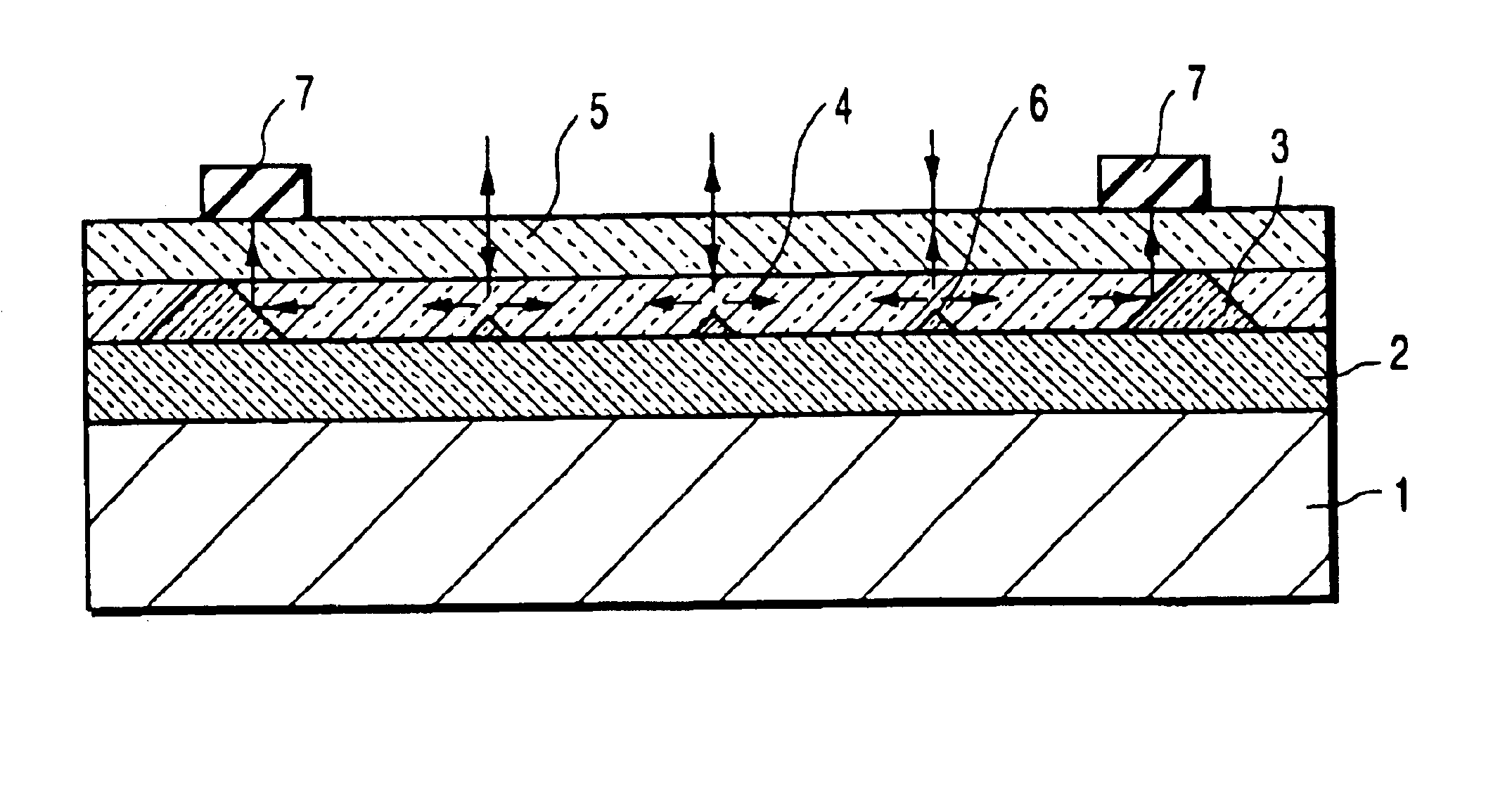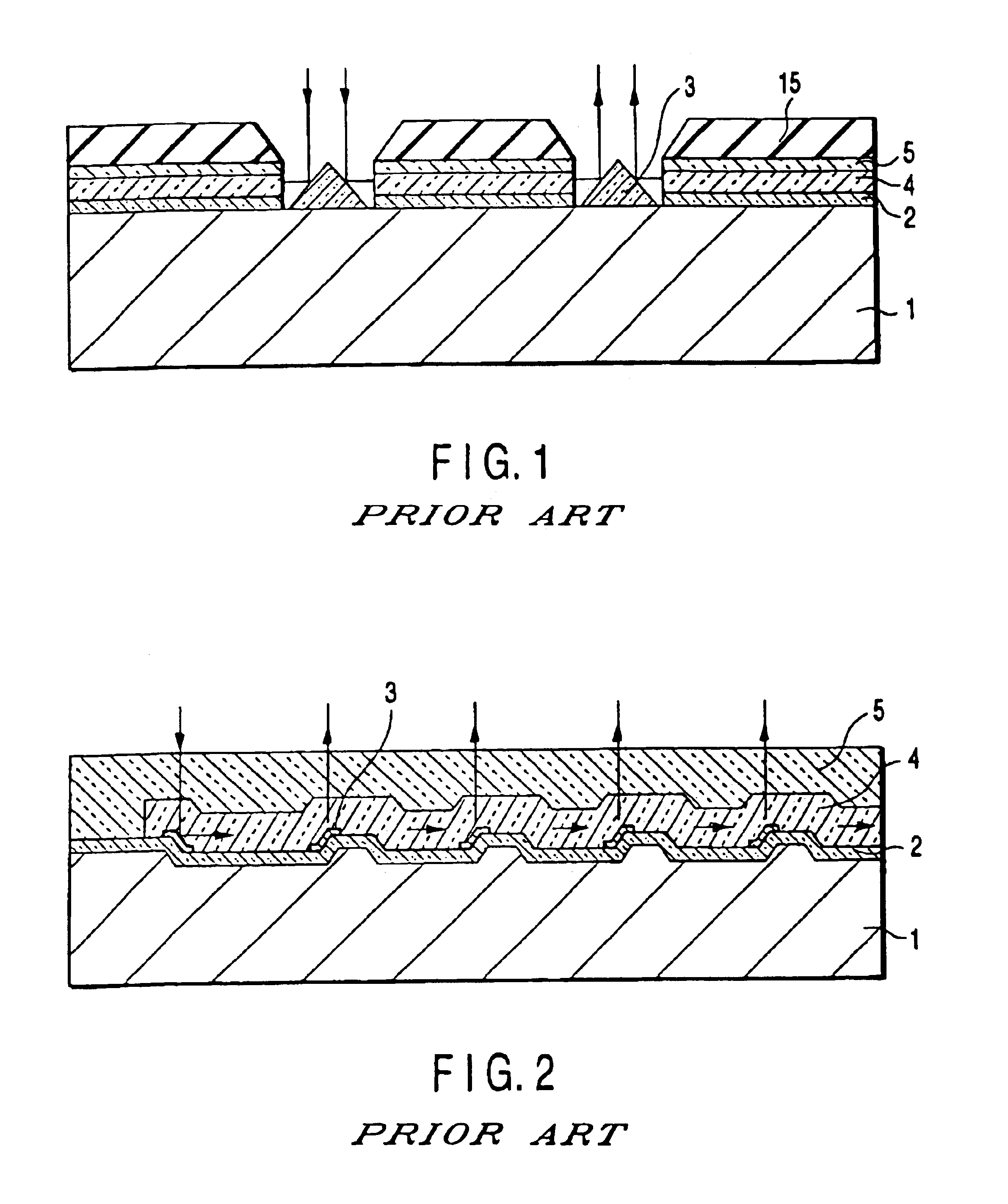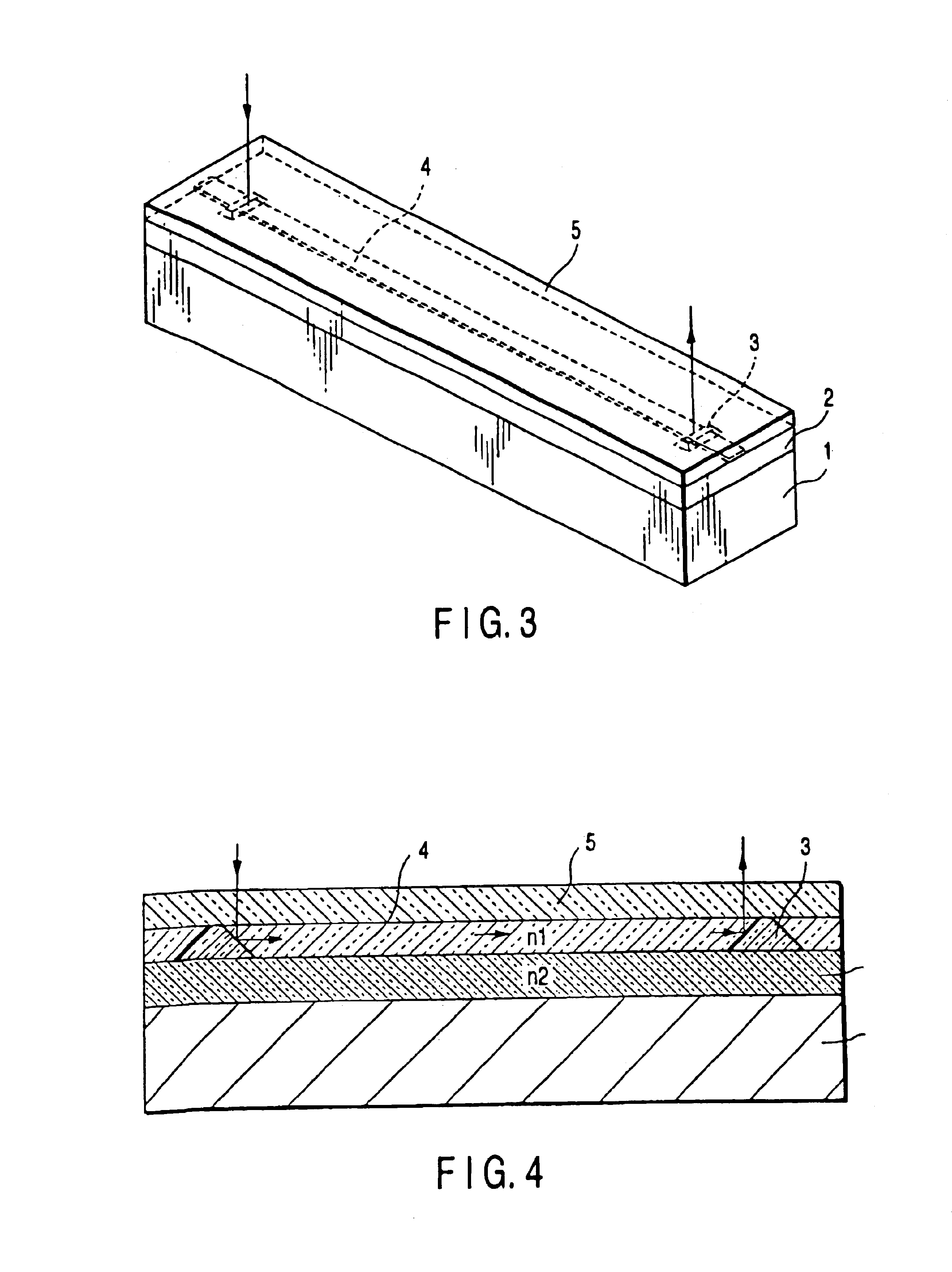Optical interconnection circuit board and manufacturing method thereof
a technology of optical interconnection circuit and manufacturing method, which is applied in the direction of optical elements, semiconductor lasers, instruments, etc., can solve the problems of signal noise and electromagnetic trouble, decrease the operating speed of electronic wiring modules, and loss of transmission wires, so as to reduce manufacturing costs, enhance productivity, and minimize optical coupling loss
- Summary
- Abstract
- Description
- Claims
- Application Information
AI Technical Summary
Benefits of technology
Problems solved by technology
Method used
Image
Examples
first embodiment
[0087]First, an optical connection board according to the invention will be described with reference to FIGS. 3 and 4.
[0088]As FIG. 3 shows, the optical connection board comprises a substrate 1 having a flat surface, a lower clad layer 2 having a refractive index n2 and formed on the flat surface of the substrate 1, a termination mirror 3 formed on a flat surface of the lower clad layer 2, an optical waveguide core 4 having a refractive index n1 and formed on the flat surface of the lower clad layer 2, and an upper clad layer 5 having the refractive index n2 and formed on the flat surfaces of the optical waveguide core 4 and the termination mirror 3. The lower clad layer 2, or the first clad layer, is provided on the substrate 1, for confining a light wave or optical signal in the core 4. The termination mirror 3 is a hollow member having a reflection face. The mirror 3 may be filled with a refractive member or metal to form a reflector having a reflection face. The optical waveguid...
second embodiment
[0094]The optical connection board will be described with reference to FIGS. 5 and 6. FIG. 5 shows part of the optical interconnection circuit board. FIG. 6 is a sectional view, taken along the axis of the optical waveguide core 4. The component similar to those shown in FIGS. 3 and 4 are designated at the same reference numerals, and will not described in detail.
[0095]In the optical connection board of FIGS. 5 and 6, three mirrors 6 are provided between two termination mirrors 3, for splitting an input optical signal. Each split mirror 6 has a face inclined at about 45° to the signal-guiding direction of the optical waveguide, like the termination mirror 3. The mirrors 6 extend across the optical waveguide core 5. The mirrors 6 have a small height than the optical waveguide core 5, unlike the termination mirror 3. In other words, their height is smaller than the thickness of the core 5. Thus, a core region for guiding the optical signal is provided over the mirrors 6. As a result,...
third embodiment
[0099]An optical connection board according to the invention will be described with reference to FIG. 7.
[0100]FIG. 7 is a sectional view showing part of the third embodiment of the present invention. The components identical to those shown in FIG. 6 are denoted at the same reference numerals will not be described in detail.
[0101]As shown in FIG. 7, the optical connection board comprises a light-absorbing segment 7 for absorbing unnecessary optical signal. The light-absorbing segment 7 is provided on the upper clad layer 5, to absorb optical signal reflected from the termination mirror 3. The other components are of the same structure as those of the first and second embodiments. The light-absorbing segment 7 may be formed by an appropriate material selected in accordance with the wavelength of the optical wave that may be applied to it. If the light applied to it has wavelength of 0.85 μm, the segment 7 may be made of semiconductors such as Si or Ge, or polymer containing carbon or ...
PUM
 Login to View More
Login to View More Abstract
Description
Claims
Application Information
 Login to View More
Login to View More - R&D
- Intellectual Property
- Life Sciences
- Materials
- Tech Scout
- Unparalleled Data Quality
- Higher Quality Content
- 60% Fewer Hallucinations
Browse by: Latest US Patents, China's latest patents, Technical Efficacy Thesaurus, Application Domain, Technology Topic, Popular Technical Reports.
© 2025 PatSnap. All rights reserved.Legal|Privacy policy|Modern Slavery Act Transparency Statement|Sitemap|About US| Contact US: help@patsnap.com



